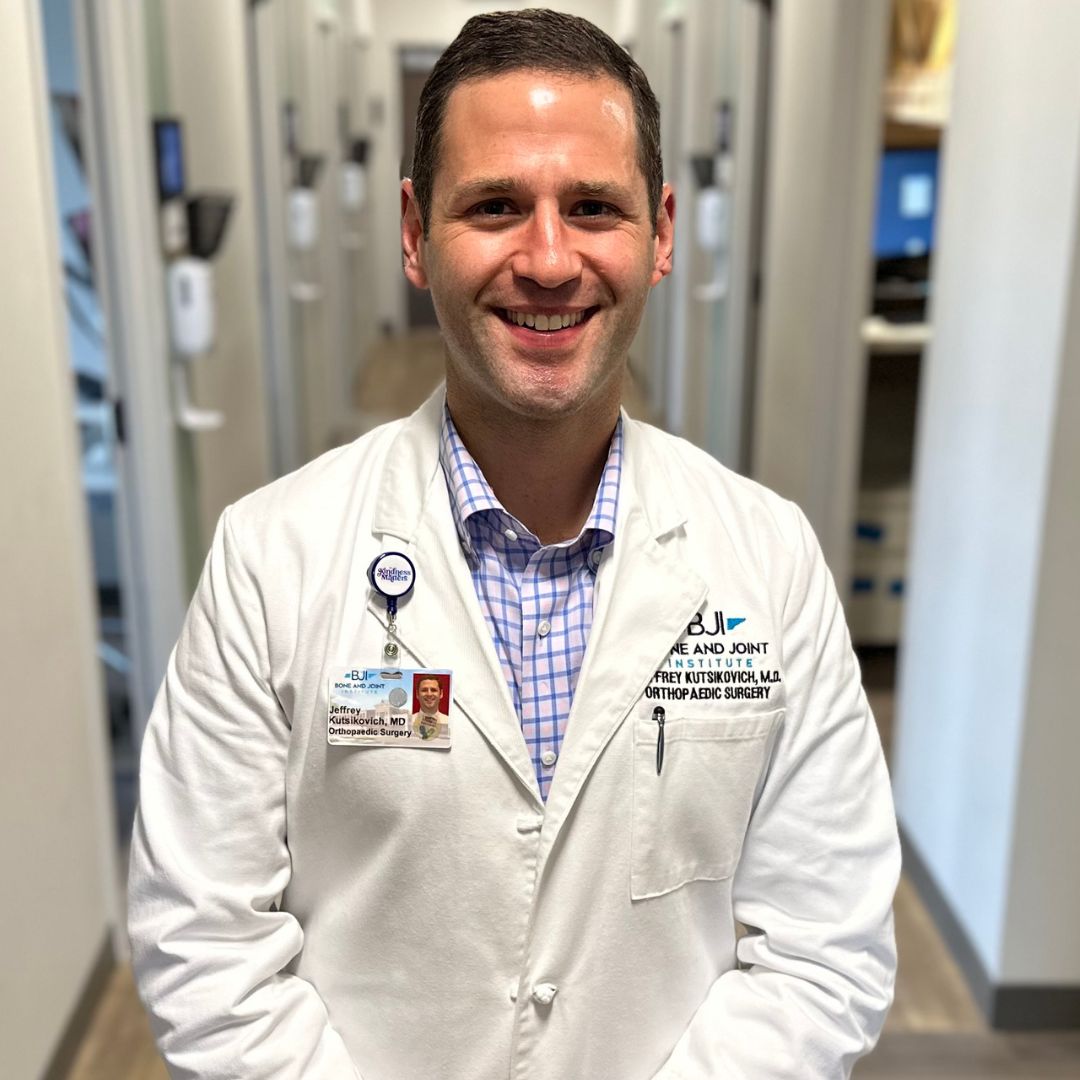
12 Jun Injuries to Watch for While Playing Pickleball
Originally published in the Williamson Herald –
Pickleball is quickly becoming one of the fastest-growing sports in America. As the summer approaches, more people are enjoying the fresh air and this fun pastime. Like most activities though, the racket sport doesn’t come without its own set of risks.
Dr. Jeffrey Kutsikovich, an orthopaedic surgeon at Bone and Joint Institute of Tennessee, has seen a recent increase in pickleball-related injuries and offers his advice on avoiding hand and wrist injuries while being active.
“One of the things that makes us human is being able to manipulate objects with our hands, and the intricate system that allows us to do that is fascinating,” said Dr. Kutsikovich. “Unfortunately, that intricacy does make our hands and wrists prone to injury.”
In addition to pickleball, Dr. Kutsikovich says he often sees injuries from soccer, lacrosse and gymnastics around this time of year. Most often, people make sudden moves, lose their balance and fall on outstretched arms causing fractures.
“Distal radius fractures are the most common type of fracture in the U.S. across all age populations,” said Dr. Kutsikovich. “It is caused when a fracture occurs in the end of the forearm bone and can sometimes require surgery.”
Many pediatric fractures can be treated with a short period of immobilization for protection. Small amounts of angulation or displacement can be tolerated in children because of the ability of the growing body to remodel displaced fractures. But, if there is significant displacement or malalignment, manipulating it or sometimes surgery may be required to align the bones for severely displaced fractures. In adults, there is little remodeling potential and displaced fractures often require surgery to realign the fractures and hold them in the appropriate position. Other common injuries in the hands and fingers such as ligament tears will often heal on their own while ligament tears in the thumb may need additional treatment.
“We try to use early range of motion to prevent stiffness as long as the injury is relatively stable,” said Dr. Kutsikovich. “Because of the number of joints in the hand and wrist stiffness in one joint can alter the mechanics of the rest of the hand.”
Dr. Kutsikovich added that the risk of stiffness increases with age. At Bone and Joint Institute of Tennessee, therapy is an integral part of taking care of hand and upper extremity injuries to recover range of motion. Although the length of recovery is based on the type of injury, bone can typically heal than sooner than ligamentous injuries and most fractures have a recovery time of two to three months.
There are many ways to keep your bone and muscles strong to reduce your risk of injury while taking part in the activities and sports you enjoy the most.
“Don’t be just a weekend warrior,” said Dr. Kutsikovich. “We see a lot of people get hurt because their bodies are not used to the activity.” Staying active more frequently at a lower impact level throughout the week, too, can help condition the body and avoid injury.
Additionally, it is important to listen to your body and not overwork yourself. Injury happens when the body is fatigued. “So many times, it’s the last throw, last serve or last ski run that results in injury,” said Dr. Kutsikovich. “The body is tired and not capable of catching itself.”
Warming up before and stretching after exercising can also contribute to injury prevention. It can increase limberness and agility while reducing stiffness and the potential for chronic overuse injuries.
It’s also important to take care of your body even when you aren’t playing sports. Dr. Kutsikovich encourages people to eat a well-balanced diet, take supplements such as vitamin D and practice gentle resistance training. “Bones have mechanical receptors that respond well to force during training,” said Dr. Kutsikovich. “Resistance training increases bone strength as well as the surrounding muscles.”
If you do experience an injury, do not hesitate to schedule an evaluation with Dr. Kutsikovich and the experienced team at Bone and Joint Institute of Tennessee. Deformity of the hand or arm after a fall, increased pain or lack of motion are all indicators that you should seek medical attention.
“Injuries that do not allow for full range of motion should be evaluated,” said Dr. Kutsikovich. “It never hurts to go ahead and come in so that we can get you back out on the pickleball court!”
To setup your consultation today with Dr. Kutsikovich or another Bone and Joint Institute of Tennessee specialist, click here or call the clinic at (615) 791-2630.
